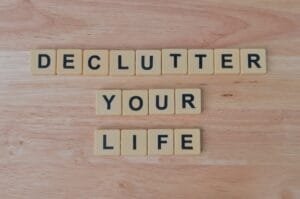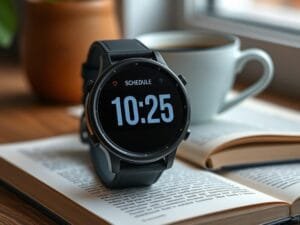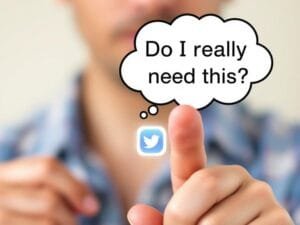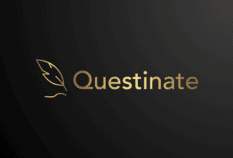Digital Minimalism is more than trend, it’s a crucial lifestyle shift for our noisy, always-connected world. In this ultimate guide, you’ll learn how to reclaim your time, improve your focus, and build healthier habits. We’ll cover everything from digital declutter to mindful technology use.
🔍 What You’ll Learn
1. What digital minimalism means
2. Easy ways to declutter your digital life
3. How to reduce screen time without feeling lost
4. Building mindful technology use into daily routines
5. Finding mental clarity and peace
1. What Is Digital Minimalism?

Digital minimalism is a philosophy of using technology intentionally, not habitually. It means focusing only on digital tools that add value, while letting go of all the rest .
- It’s not about ditching tech—it’s about reclaiming control
- You choose when and how to connect, on your terms
- Like physical minimalism, it removes clutter so meaningful things stand out
2. Declutter Your Digital Life — Step by Step

This first step is crucial. Follow this mini blueprint to declutter your digital life:
✅ Uninstall apps you don’t use daily
✅ Mute notifications for non-essentials (games, ads)
✅ Sort emails into “Needed” / “Archive” folders, deeply pare down
✅ Do a one-time “digital purge”: delete old unnecessary photos, conversations, files
✅ Turn off banner ads, pop-ups, and autoplay videos
Even small steps here dramatically reduce distraction and free up mental space .
3. Reduce Screen Time Without Going Dark

You don’t need to quit screens entirely—just reduce screen time intentionally:
- Schedule screen-free hours in your day—mornings, meals, bedtime
- Use app timers or built-in screen-time stats to track usage
- Replace scroll time with analog activities (reading, walking, journaling)
- Batch your digital work into single focused blocks
These habits helped digital minimalists improve focus and calm in formal studies .
4. Practice Mindful Technology Use

Once you clear clutter and limit screens, it’s time for mindful technology use:
- Ask before opening an app: What do I get from this?
- Use tech for a purpose—learning, connection, creativity—not to escape
- If something isn’t a tool, it’s a distraction
- Treat digital check-ins like appointments: fixed times, set duration
This mindset shift from passive use to active ownership.
5. Gain Mental Clarity & Emotional Balance
The effects of digital minimalism ripple through your mind and mood:
- Fewer distractions → deeper focus, better productivity
- No constant comparison → greater self-esteem
- Calm mornings and nights → improved sleep and lower anxiety
People report feeling lighter, calmer, and more creative after decluttering their digital lives.
6. Long-Term Reset: 30-Day Digital Detox
For a full reboot, try a 30-day digital detox—turn off non-essential tech entirely:
- Put aside social media, apps, non-critical emails
- Reintroduce only the tools you actually need
This intense reset helps you build digital minimalism habits for the long run. Check out this article on 30-Day without social media.
7. Keep the Balance: Tools to Support You
- Screen timers (Android/ iOS): help track and limit usage
- Core apps only: essentials like calls, email, calendar—no fluff
- Analog hobbies: reading, walking, journaling, cooking—without distraction
By merging analog joys with digital utility, you stay in control.
✅ Why It Matters in 2025
- The attention economy is designed to hijack your time
- Constant alerts, ads, and comparisons fuel stress and fatigue
- Digital minimalism gives you the power back: to live deliberately, not reflexively
This isn’t just a blog trendy post—it’s a proven roadmap to better living.
FAQs
1. How long should I practice digital minimalism?
Start with 1 week. Move to 30 days if you like. A reset isn’t permanent—it’s a powerful reset.
2. Will it hurt my work or studies to go minimal?
Not if you plan. Keep essential tools. Batch your tasks. Digital minimalism helps you focus better.
3. Isn’t this just another tech fad?
No. It’s rooted in research and real mental health improvements .
4. Can I still use Instagram or YouTube?
Yes—on purpose. Create, learn, connect. Don’t scroll aimlessly.
5. What if I relapse?
That’s normal. Just notice it, reset, and continue. Progress is not perfection.
Final Takeaway
Digital minimalism isn’t about deprivation—it’s about choice, clarity, and intention. Follow this guide and step into a quieter, more fulfilling digital life.
If you enjoyed this post, share it with someone drowned in notifications. Let’s help each other unplug—beautifully and meaningfully.
You can also check out these articles:
Plant-based-diet-for-weight-loss-2025
30 days without social media looks like this
NOTE:
Have Questions?
Feel free to leave a comment on the post! Our team is here to respond to your queries as quickly as possible.
Thank You for Visiting Questinate!
We’re thrilled to have you explore our site for tips, knowledge, and insights. Stay updated with fresh, valuable blogs by visiting us daily.
Spread the Word!
If you found this helpful, share it with your friends and family: Questinate – Explore, Learn & Enjoy
Contact Us!
If you have any query Contact Us – Questinate, we are happy to assist you.
We look forward to seeing you again soon!

